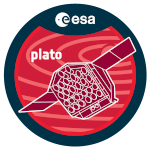The uninterrupted and high-precision photometry provided by space-borne instruments such as PLATO require long preparatory phases. Versatile siulations that accomudate PLATO's innovative payload design are thus needed to continuously assist with the design, assessment, and validation of the instrument. Realisitic and reliable simulations are likewise essential in order to shape and test the processing pipeline which will, together with ground-based RV follow-up observations, deliver the necessary unforseen stellar and planetary parameters needed for system characterisation. Accordingly, we here present PlatoSim, a dedicated end-to-end PLATO camera simulator with the ability to simulate all of the expected observations of the PLATO space mission, including image time series, meta data, house-keeping data, and light curves. The strong predictive power of PlatoSim will be shown through its diverse applicability and contribution to numerous working groups within the PLATO Mission Consortium. Aside the core science program, 8% of the mission operation will be used on complimentary sciences. Thus, a suite of new simulation studies will be used to highlight the scientific potential of the PLATO complimentary science program -- including stellar pulsators (e.g. gamma Doradus star, delta Scuti stars, Cepheids, and RR Lyrae), eclipsing binaries, transient events (e.g. super massive black hole binaries, gamma-ray bursts, and stellar activity), and synergies of these to the core science program. PLATO's ability to photometrically detect a suite of variable phenomenae will be placed in the context to how simulations with PlatoSim quantitatively can help the future observations to push beyond current theoretical barriers of stellar structure and evolution.

 PDF version
PDF version
